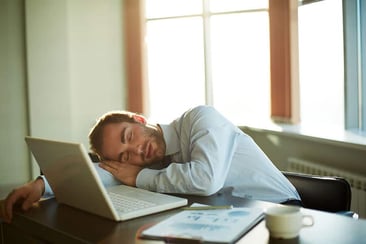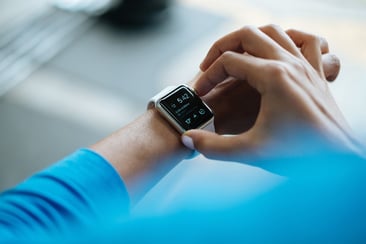Fatigue, sleepiness, exhaustion – they’ve all become interchangeable terms that point to a serious issue in workplaces today – increased risk of injury, a loss of productivity, and an impact on your company’s bottom line.
When you haven’t gotten the ideal amount of z’s, your reaction time, decision making, and situational awareness are all hindered.
Whether you work at a desk 8 hours a day or in an industrial setting, inadequate sleep can have grave consequences.
Let’s take a look at some of the main culprits of fatigue and how you can manage, and even prevent them:
Think ergonomically
We’ve all heard that sitting all day is bad for you. You might not have the right desk for it, but there’s usually some way you can shift your workspace to have a keyboard and monitor at standing height – You’ll have a much harder time falling asleep on your feet!
Consider smaller things as well. Avoid eye strain by making sure your monitor is far enough, and your keyboard and mouse should be close enough to prevent excessive reaching.
Take your breaks
For this, it’s useful to have an understanding of workplace laws in your state. Generally speaking, an employer should be providing you with two 15 minute breaks and a lunch over the course of an 8-hour work day.
Taking short breaks helps us to retain information and make connections. Although it was once thought that our brains went dormant when we daydreamed, studies show that activity in many brain regions actually increases when we let our minds wander a bit. Don’t argue with science, take those breaks!
Eat well
A healthy diet helps us naturally have energy and fight off fatigue. Foods that are rich in potassium will keep your muscles from cramping too.
Foods high in sugar and simple carbs (fast food) that rapidly increase your blood sugar will be followed by sharp drops that cause fatigue over the course of your day. Keep your blood sugar steady by having protein and whole grains.
Wearable tech
Sleep trackers can give you fascinating insight into the third of your life you spend asleep. Many of the wearable tech options today track the duration and quality of your sleep, and can even wake you up at the optimum time.
Consider the fitbit blaze or the Jawbone.
Employers are also now more cognizant of the effects of good sleep on their bottom line. Consider companies like Fatigue Science, a leader in the development and application of fatigue risk management technologies.
Fatigue Science recognizes that worker fatigue is the leading cause of safety incidents and even fatalities in heavy industries like mining, mills, transportation, and others. As a result, they developed the ‘Readiband’ – a watch that measures fatigue based on sleep patterns and lets heavy industry employers know when a worker might be too fatigued or not fit to work, thus reducing workplace accidents.
TPD's Staffing department recently partnered with Fatigue science to reduce worker accidents with a 'fit for duty check' that removes. fatigue-related risk - Learn more about the partnership here.
Be consistent with sleep
If you’re up at 4am on Saturday night, sleeping late Sunday – chances are high that your sleep pattern will be disrupted. It’s important to start the week off well-rested, so if you’re out late on the weekend – try waking up close to your normal time and then power napping for twenty minutes in the afternoon.
Unplug
The harsh light of your iPhone or tablet has the ability to throw off your body’s natural circadian rhythm by suppressing melatonin, the hormone that helps to regulate sleep and wake cycles. Avoid technology for one to two hours before bedtime.
Having exhausted employees will certainly impact your bottom line - Stay on top of this and learn more about tracking employee absenteeism in your organization.
Filed under Expert Series

.png?width=2400&name=HQ%20TPD%20careers%20hero%20(1).png)



